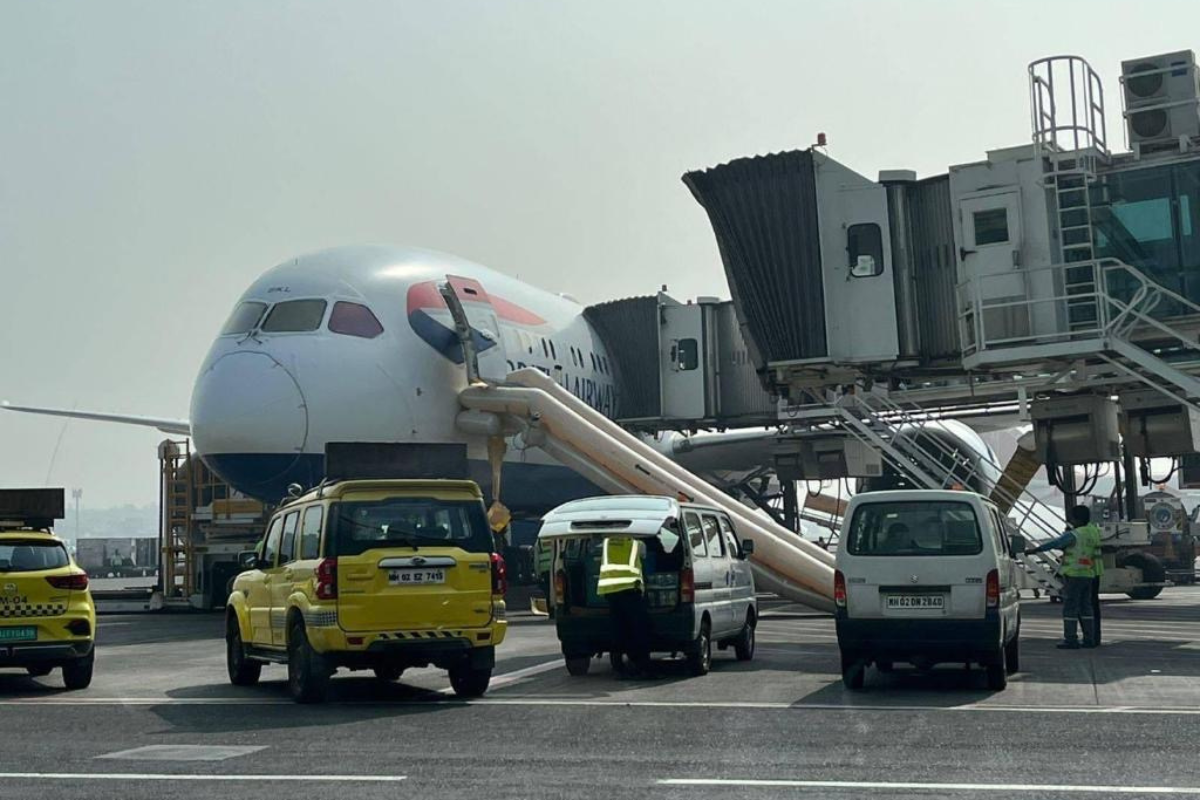
A senior British Airways cabin crew accidentally deployed an emergency slide on a Boeing 787 Dreamliner as the aircraft was still taxiing to the gate following a commercial flight to Mumbai which had passengers onboard on January 4.
The seven-year-old Boeing 787-9 had just landed in Mumbai following an 8-hour flight from London Heathrow and was just pulling up at the gate when the emergency slide at the forward left-hand door was accidentally activated.
It is understood that the slide was deployed when the cabin manager was carrying out an impromptu demonstration to a colleague as to how to open the door in an emergency situation.
This is the fourth time in less than a year that British Airways cabin crew have accidentally activated emergency slides in what can only be described as strange circumstances.
Known as ‘inadvertent slide deployments’ in the aviation industry, these accidents aren’t unheard of but the vast majority are the result of cabin crew failing to properly disarm the slide mechanism and then opening the door for normal arrival formalties.
On January 13, 2023, a new-hire member of British Airways on one of their first flights accidentally activated an emergency slide on a Boeing 777 during pushback from the gate at Heathrow.
It’s understood that the crew member had been asked to arm the slide but, after doing so, panicked and opened a door which should normally only ever be opened during an emergency evacuation.
Several months later, another brand-new crew member activated an emergency slide on an Airbus A350 in similar circumstances, arming the slide and then opening the door as the aircraft was preparing for departure to Austin.
A few weeks later, a crew member on an Airbus A320 that had just landed in Madrid opened an emergency exit instead of disarming the slide as had been ordered by the pilots. In doing so, the slide was activated.
In an attempt to stop this worrying trend, British Airways recently introduced the Japanese ritual of Shisa Kanko which translates in English to ‘pointing and calling’.
The ritual involves cabin crew pointing at the door and calling out whether the door is armed or disarmed before preparing the door for departure or arrival.
First developed for use on the Japanese railway network in the early 1990s, Shisa Kanko is said to reduce workplace accidents by as much as 85% by deliberately slowing down tasks that are prone to mistakes so that workers concentrate on the job at hand.
Surprisingly, in this latest incident, engineers were able to simply remove the slide and the aircraft was allowed to return to London with a delay of just over an hour.
In a statement, a spokesperson for British Airways said: “We apologised to customers for the short delay to their flight”. The airline noted that the aircraft was only cleared for departure after being checked over by qualified engineers.
Mateusz Maszczynski honed his skills as an international flight attendant at the most prominent airline in the Middle East and has been flying ever since... most recently for a well known European airline. Matt is passionate about the aviation industry and has become an expert in passenger experience and human-centric stories. Always keeping an ear close to the ground, Matt's industry insights, analysis and news coverage is frequently relied upon by some of the biggest names in journalism.








How tired was the IFM? Since Heathrow Cabin Crew was formed the scheduling practices have deteriorated a lot. Formerly we
did not operate the number and combination of short haul duties that we do now and Mumbai is usually linked to short haul
flights before the long haul portion. Short haul flying is exhausting, 3 or 4 sectors a day that can take all day to complete. Yes,
the company agreed to limit the hours on the duty preceding a long haul flight but they are still long and don’t account for the
hours involved in getting from home to work beforehand. A 9 hour day can take 12 or 13 to end the individuals day and then
go to India.